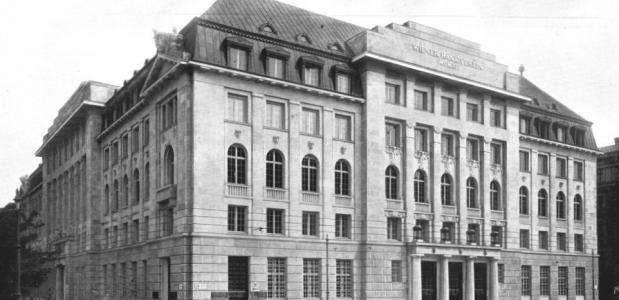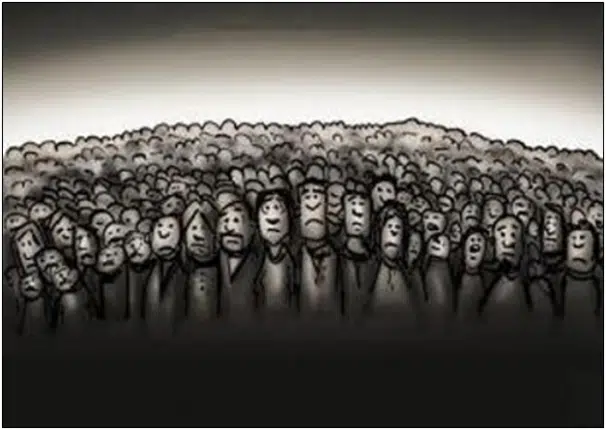NRD Editor’s Note: This column originally appeared at RealClearMarkets.
By Robert Romano — We’ve seen this movie before. The U.S. housing bubble of the 2000s followed by the world financial crisis of 2008, and the great recession that has followed, complete with persistent, high unemployment, asset prices collapsing, and no seeming end to the pain. All this bears a striking similarity to global events some 80 years earlier at the onset of the Great Depression.
In the 1920s following the Great War, many major financial institutions all over the world dramatically expanded credit without adequate capital, excessively lending money into existence — just as was done a decade earlier to fund the war — until finally the loans went bad and errant banks ran into serious trouble.
Austria serves as a prime example of the above. Poor lending policies led to a string of bank failures throughout the decade, with the “bad” banks being rolled into larger competitors. Particularly, the Allgemeine Oesterreichische Bode-Credit-Anstalt (BCA) — the second largest bank in Austria at the time — had taken over a multitude of these failing institutions, until 1929, when it too was failing.
At that time, the Austrian Credit-Anstalt bank, the nation’s largest bank, was called upon to take over the BCA and its empire of bad banks, and so it did, creating a superbank. It had become too big to fail. But it was not long that, as the depression wore on, it too had succumbed to failure.
The bank and, indeed, the world financial system — not unlike in the crisis of 2008 with the failures of Bear Stearns and Lehman Brothers — had become insolvent.
The end of the “gold standard”
The downfall of the Credit-Anstalt was followed by Austrian state guarantees of the bank. In “The Credit Anstalt Crisis of 1931,” author Aurel Schubert observes that “in spite of all efforts by authorities, the market anticipated inflation and a currency crisis, starting with the early days of the Credit-Anstalt crisis. The public recognized the inconsistencies of the adherence to the gold exchange standard in combination with the massive expansion of domestic credit and the inability of the Austrian government to preserve orderly public finances in the light of the guarantees for the liabilities of the Credit-Anstalt.”
In other words, the Austrian government had already taken the country off the gold standard by guaranteeing all the bad bank debts. As Schubert notes, “One price of the salvage of the Credit-Anstalt was the gold parity of the schilling, and that was clearly recognized by the market as early as mid- to late May 1931. The behavior of the authorities who considered the market’s evaluation to be wrong cost Austria its entire foreign exchange reserves, without being able to stop the decline of the currency.”
By April 1933, just a month after the U.S. had done so, the partial interwar gold standard in Austria was abolished, officially resorting to devaluation to reflect the weight of the bank bailouts. By 1936, gold as the international unit of currency was finished.
As the Financial Times associate editor and chief economics commentator Martin Wolf reminded readers this past June, “It is often forgotten that the failure of Austria’s Creditanstalt in 1931 led to a wave of bank failures across the continent. That turned out to be the beginning of the end of the gold standard and caused a second downward leg of the Great Depression itself.”
That is true. But the history preceding the failure is critical to observe.
In it, we see the ordering of the debt supercycle — what we’ll call here the debasement cycle — quite clearly: Lax lending standards and easy money lead to a credit bubble, eventually resulting in bad loans, touching off major losses at too-big-to-fail financial institutions without adequate capital, followed by government guarantees of the banks (i.e. bailouts), and ultimately resulting in a collapse of the monetary system.
Of course by other accounts, including that of now-Chairman of the Federal Reserve Ben Bernanke, it was not the credit bubble of the 1920s that caused the Great Depression but rather “nations’ adherence to the gold standard”.
What gold standard?
But what sort of “gold standard” would allow a credit bubble — with credit outstanding rising to some 300 percent of the Gross Domestic Product in the U.S. by 1933 as noted by Hoisington Investment Management chief economist Dr. Lacy Hunt — to come into being in the first place? Were banks lending gold into existence, or excessive credit?
By Bernanke’s own account, the U.S. restored the gold standard after the war in 1919. If that was the problem, why then did it take a full decade for the standard’s deflationary effects to be felt? How constraining, really, was that standard on credit creation during those years? Why hadn’t these problems emerged during the height of the standard from 1870 to 1914?
As economists Barry Eichengreen and Kris Mitchener found in a 2003 Bank for International Settlements paper, “The Great Depression as a credit boom gone wrong”: “equally pronounced credit booms were not a facet of the classical gold standard… [T]he amplitude of credit fluctuations appears to have been less under the pre-1914 gold standard than under the more flexible exchange rate regimes that followed.”
So, there you have it. The interwar standard was inferior to its prewar predecessor because it allowed the explosion of credit to occur. The whole point of hard money, whether it be gold, silver, or clam shells, is to limit the supply of cash and, in principle, the supply of credit. That did not happen during World War I, when the gold standard was suspended, and it did not happen in the decade that followed, when it was supposedly partially restored.
The problem was not tight money in the critical years that began the depression starting in 1929, but all of the easy money — the real estate bubble, the stock market bubble, and the explosion of consumer spending — in the decade prior that were consequential.
Like today’s crisis, this was a fatal conceit that we could have everything by cheating the laws of nature; that there is a shortcut to prosperity wherein savings and hard work can be averted.
Perhaps therefore a better reading on Bernanke is that the interwar gold standard could not sustain the credit bubble of the 1920s. Similarly, in Europe today, the euro in its present form cannot sustain the excessive socialism in Greece nor the government guarantees of insolvent banks in Spain and Ireland.
But leave no mistake, as in the Credit-Anstalt crisis, excessive credit is and has always been the problem, and more of it will not alleviate the pain.
Robert Romano is the Senior Editor of Americans for Limited Government.







